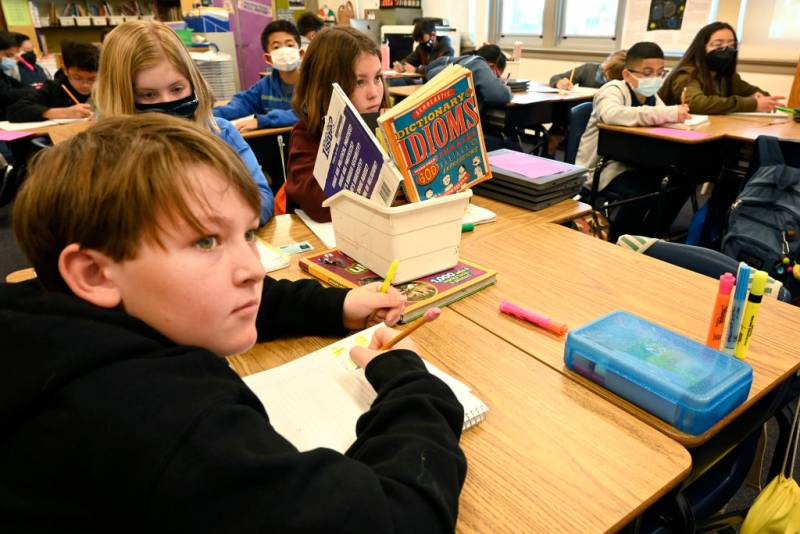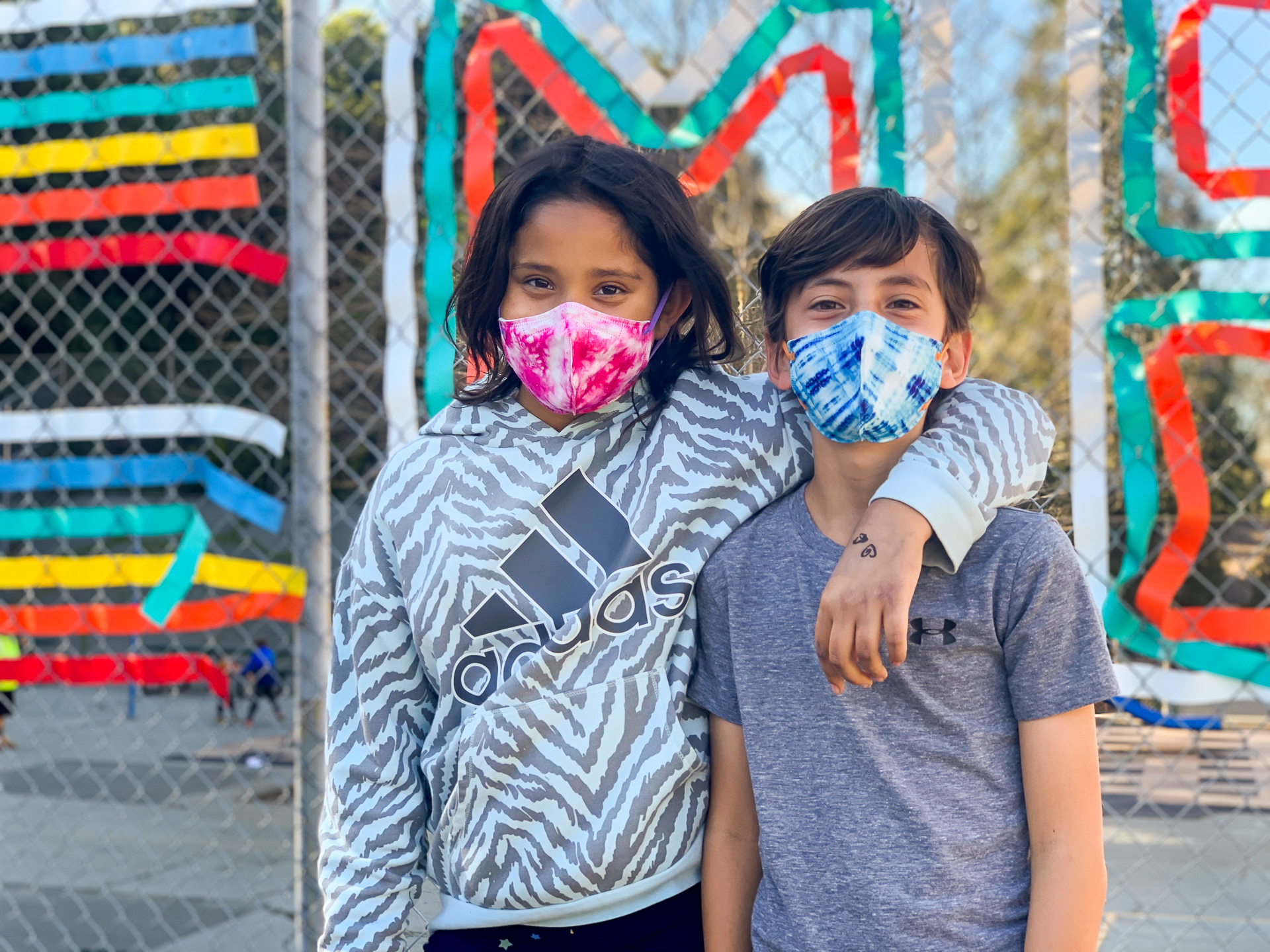Today is the first day many kids in California can see each other smile or frown throughout the day.
That's because the state just ended it's indoor mask mandate for schools — the first time kids have had the option to lower their face coverings since most of them returned to in-person classes last year.
Grace Richards is thrilled she doesn’t have to wear her Hello Kitty mask to second grade at her elementary school in Petaluma.
"I can finally take it off and we can finally see everybody's personality!" said Richards, smiling. “I know I’m going to be safe because we have to stay an arm's distance away from each other while eating and drinking."
That’s not exactly true. Richards is still at risk if she’s sitting near someone who's infected. Social-distancing protocols do help lower transmission, though, which is why Garrett Glass is ditching his mask in his fifth grade class in San Anselmo.
“We sit, like, three feet apart,” said Glass. “So I'm not that worried about getting it in class.”
Glass wasn't even really fazed when one of his classmates tested positive just last week.

